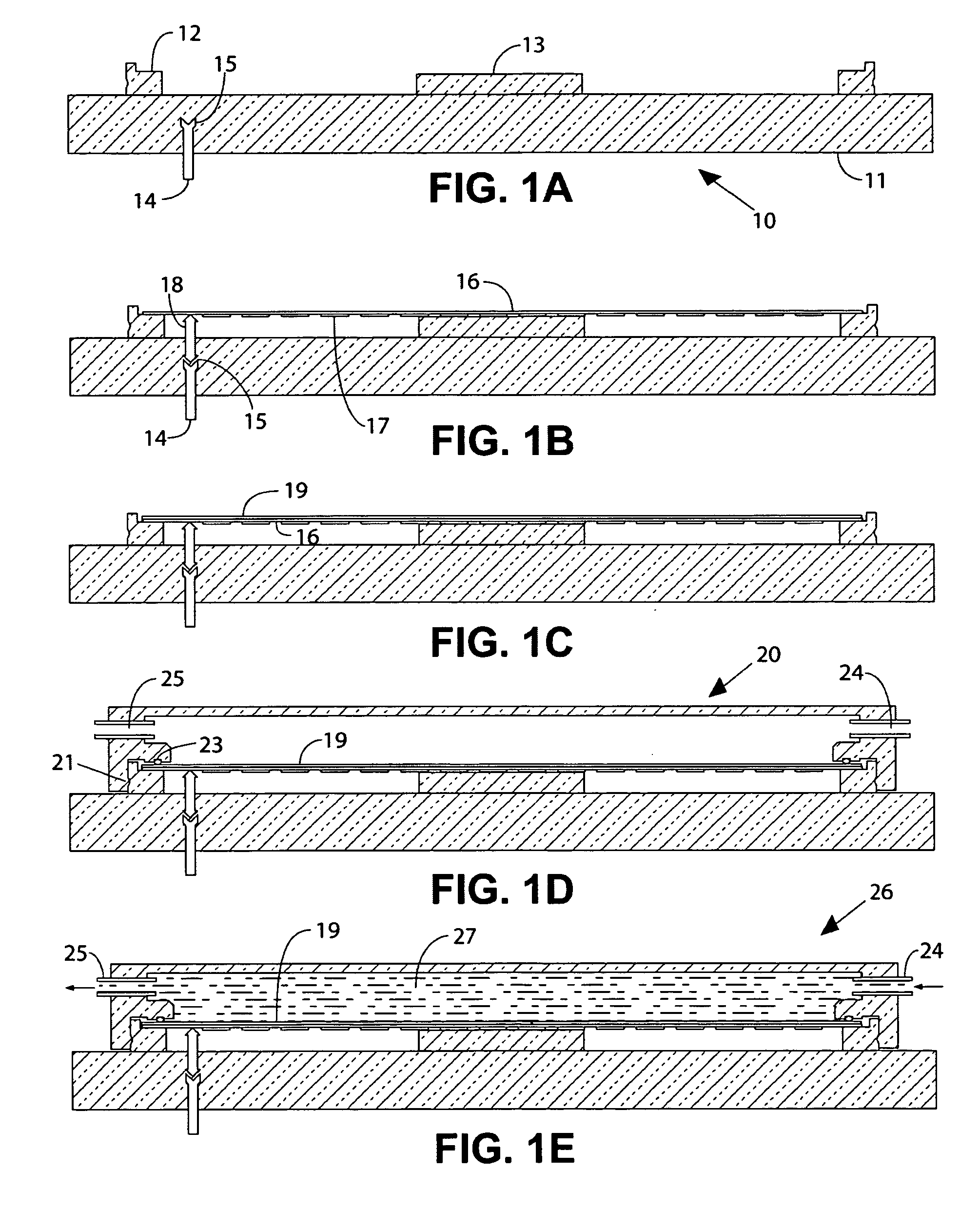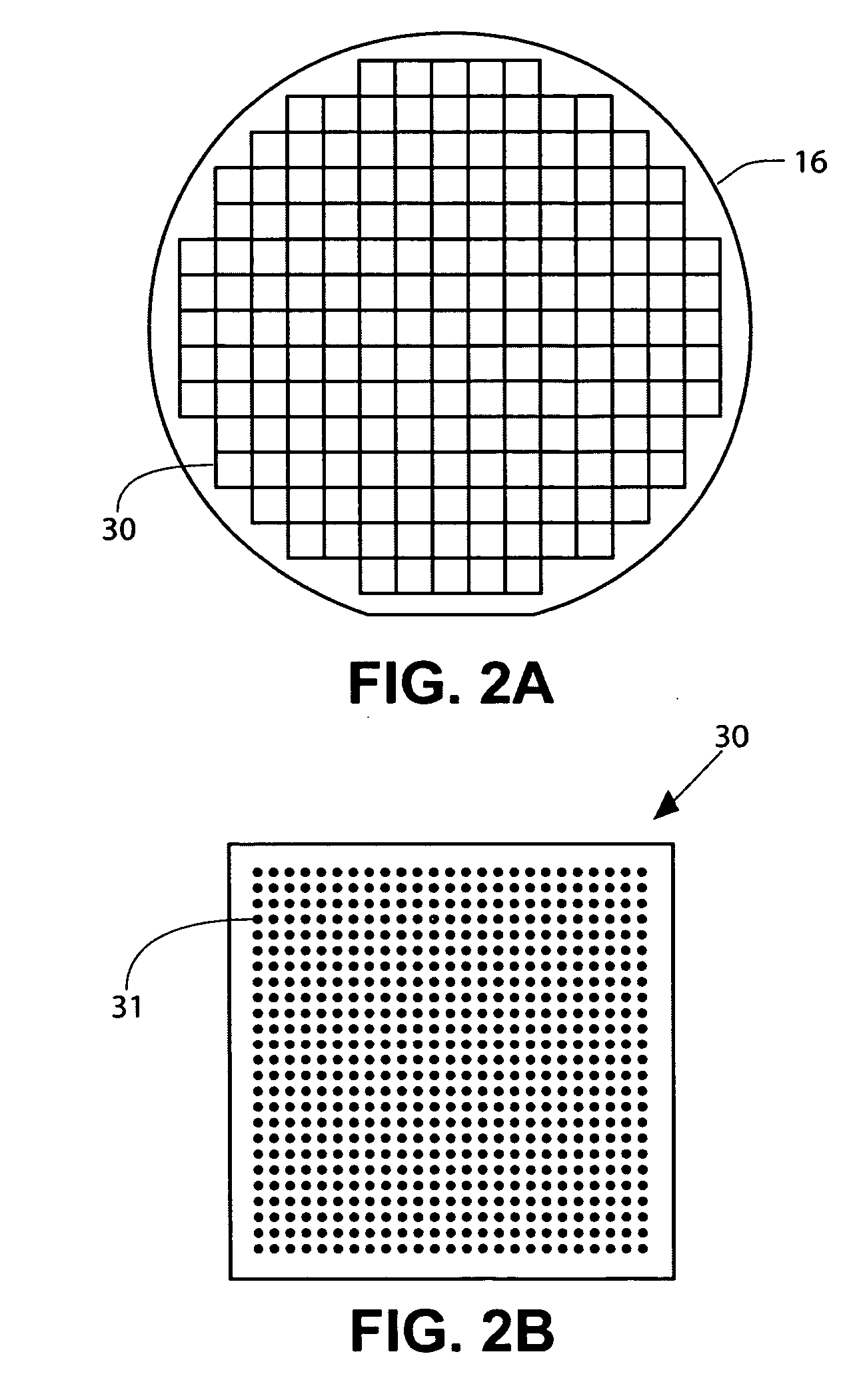Wafer level test head
a test head and wafer technology, applied in the direction of electrical testing, measurement devices, instruments, etc., can solve the problems of limiting the speed of wafer sort testing, % of the total chips are typically defective, and the use of probe cards is extremely complex, so as to relieve tensile/compressive stresses and reduce the effect of shear stress
- Summary
- Abstract
- Description
- Claims
- Application Information
AI Technical Summary
Benefits of technology
Problems solved by technology
Method used
Image
Examples
Embodiment Construction
[0022]FIG. 1A-1E details a sequence of steps to configure and operate a wafer level test head of the current invention. The reference case will be assumed: 177 microprocessor die on a bumped 300 mm wafer, with each die dissipating 120 watts of heat. The total heat generated during testing is over 20,000 watts.
[0023]FIG. 1A shows a test pedestal 10 including a base plate 11, a support ring 12, a center support 13, and electrical input / outputs 14 terminating in a connector 15. Electrical input / outputs 14 include a power source such as 42 volts DC, plus an interface to a test support computer, as will be further described.
[0024] In FIG. 1B test execution wafer 16 is positioned on pedestal 10 using support ring 12 and center support 13. Test execution wafer 16 has an array of integrated circuit (IC) chips like 17 mounted on its bottom side. These chips will perform all test execution and power distribution functions, as will be further described. They are attached using improved flip ...
PUM
 Login to View More
Login to View More Abstract
Description
Claims
Application Information
 Login to View More
Login to View More - R&D
- Intellectual Property
- Life Sciences
- Materials
- Tech Scout
- Unparalleled Data Quality
- Higher Quality Content
- 60% Fewer Hallucinations
Browse by: Latest US Patents, China's latest patents, Technical Efficacy Thesaurus, Application Domain, Technology Topic, Popular Technical Reports.
© 2025 PatSnap. All rights reserved.Legal|Privacy policy|Modern Slavery Act Transparency Statement|Sitemap|About US| Contact US: help@patsnap.com



